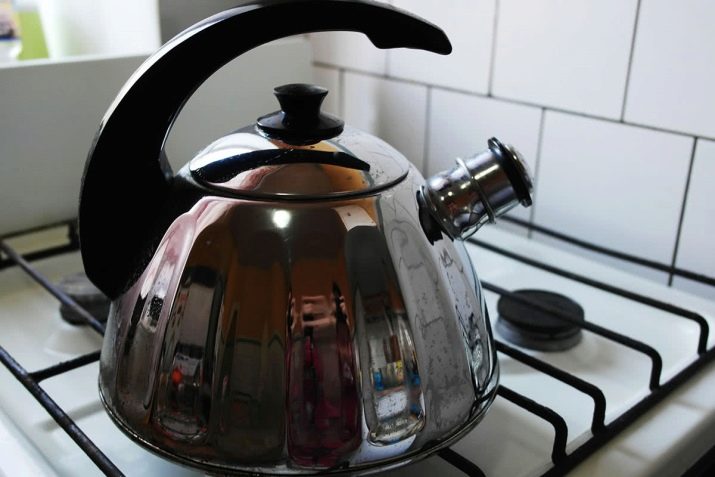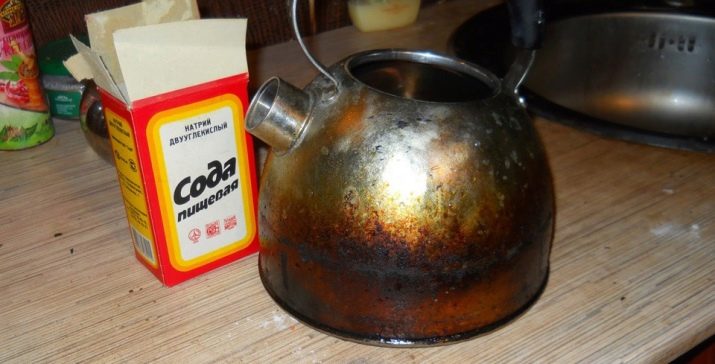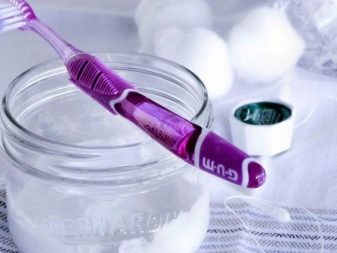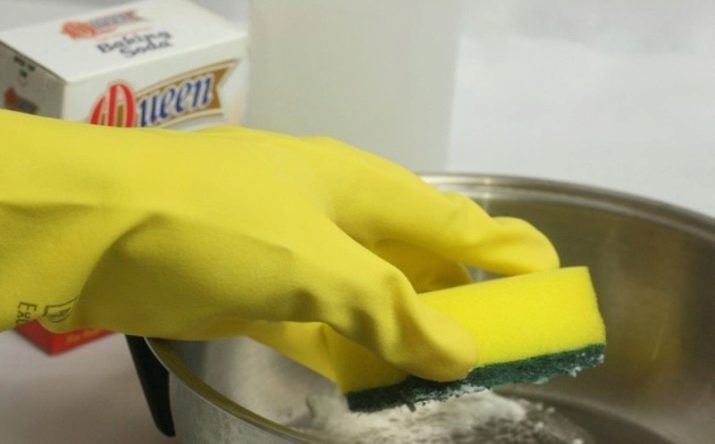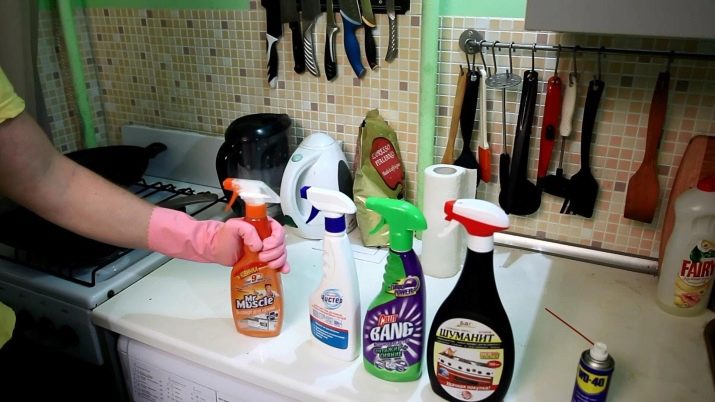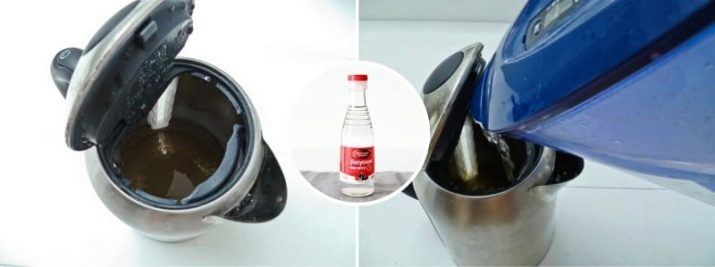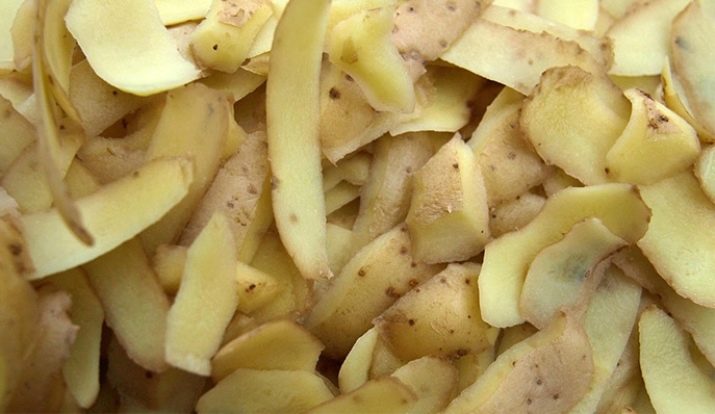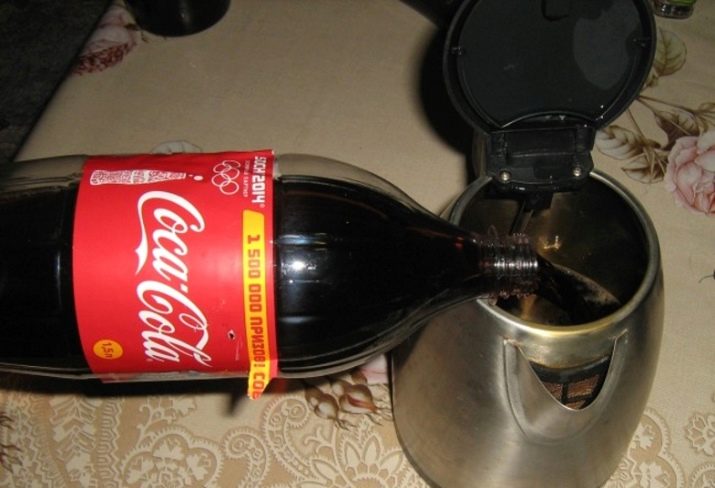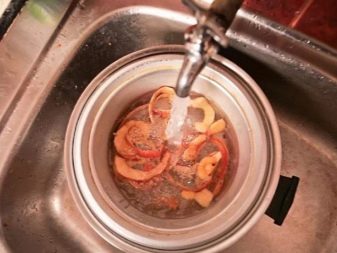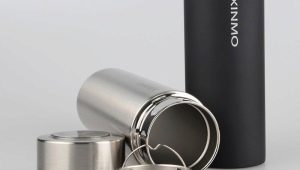How to clean a stainless steel kettle outside?
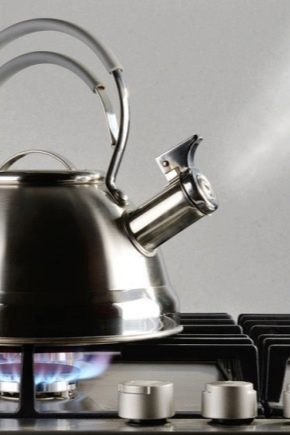
The favorite teapot from a stainless steel becomes polluted over time as from outer side, and from within.
There are a lot of household chemicals on store shelves, but it is toxic, expensive, and sometimes ineffective. It is more rational to use simple folk remedies, which, without much hassle, will help solve the problem of cleaning the kettle.
How to wash a stainless steel kettle outside?
Soda
This tool is ideal for all occasions when it comes to cleaning dishes. Without exaggeration, this substance can be called universal.
Soda blends well with stainless steel, it can clean the metal kettle from:
- rust stains;
- oils;
- fatty deposits;
- scum.
1 option
The kettle is wiped outside, put on the table. Soda is applied to a wet rag or sponge, the surface is wiped. After completion of the kettle can be washed under running water. Then the kettle is recommended to heat, in this case, the plaque, which is formed on the outside outside, can be easily cleaned. It is recommended to keep precautions during work.when dealing with hot dishes.
The lack of soda lies in the merits themselves, its fine particles can leave scratches, they are not only able to clean the surface, but also damage it.
Option 2
Water is poured into the pot at room temperature, soda is dissolved in it at the rate of 1 tablespoon per 1 liter of water. Then a stainless steel kettle is lowered into the pan, the pan is placed on the stove. Boil should be no more than half an hour, then the liquid is cooled. Using a damp cloth, wipe out all of the deposits on the surface. To better clean the kettle, you can add a few drops of detergent.
3 option
Soda is used in combination with vinegar. 4 tablespoons of soda and 4 tablespoons of vinegar are poured into a large saucepan, the contents are well stirred. Then a kettle is placed in this pot. The pot is placed on the stove. It is recommended to boil no more than ten minutes.
The liquid drains after cooling. Kettle is cleaned of plaque and grease, washed with water from the tap. Then you should wipe the surface with a towel.
It is important to observe the required concentration of the solution: the larger the pan, the more soda and vinegar will be required.
Toothpaste
4 option
From a tube of toothpaste, a small amount is squeezed onto a dry cloth and the stainless steel kettle is wiped outside. Then the surface is washed with warm water. Do not use whitening paste because of the content in it of particles that can damage the dishes.
5 option
There are special cleaning compositions that effectively clean any dishes, for example: "Schumann". There are other means, there are a fair amount of them on the market, for example, Cif, Cillit.
Each package contains a memo with recommendations for use: it is recommended that you read the information carefully. When using cleaning agents, be sure to wear gloves.
It should be remembered that all household cleaners contain toxins that should not fall on the inner surface of the dish.
If you use for cleaning such a substance as "Schumann", then must use a respirator. This substance can eliminate any plaque, but it is unsafe for health, and also has an unpleasant smell.
How to wash the electric kettle from the inside?
Electric kettles often get bloom inside, so they must be periodically cleaned. An effective remedy is citric acid. It is easy to calculate the concentration of this substance. A bag of citric acid is packaged in 25 g each; an ordinary kettle has a volume of not more than three liters. One bag is enough to clean the kettle from scale.
This problem occurs regularly, the presence of plaque changes the taste of drinks, so it is regularly recommended to carry out preventive work.
Citric acid is added to the kettle (one sachet), the vessel “soaks” for one hour.
In this case, you should not use any devices in the form of brushes or something like that. The raid will lag behind by itself, the most important thing is to make the necessary concentration of the solution so that it “works” efficiently.
Folk remedies
Vinegar
Also a good home remedy is vinegar. It is ideal to clean the dirt outside the kettle and remove sediment inside the vessel. It is important to respect the timing and appropriate concentration.
A solution is made of nine per cent vinegar in a ratio of 3: 1. Then it is boiled in a kettle, after which the liquid remains for some time in a vessel. Then the solution is drained, if the residues of scale still remain inside the kettle, the operation is repeated again.
Inevitably, after the completion of the procedures, there will be a smell of vinegar, which is ingrained in the metal. It is not difficult to get rid of it: the tap water is poured into the kettle and simmered. Usually, after repeating the second - third cycle, the smell of vinegar evaporates.
Potato peel
There are also folk methods that effectively help get rid of plaque and dirt. Inside the kettle is boiled potato peel.
Brine
Cucumber pickle is also among the popular ways of scaling.
You can also pour Coca-Cola or Sprite, chemicals in these drinks eliminate the layer of scale.
From the outside, the kettle is easily cleaned with dishwashing liquid; this can be done even if the contamination is sufficiently substantial.
Chemicals
It is convenient to use special melamine sponges, their structure corresponds to an eraser. It is recommended to do everything carefully, avoid contact of moisture with electrical contacts.
After all the operation is completed, the surfaces are wiped with a dry cloth.
On the market you can find effective tools:
- Salit;
- "Antinakipin".
Such drugs are effective and easy to use. A portion of this substance is added to the kettle, water is added, the contents are boiled for a while. However, it should be borne in mind that some drugs may be unsafe for health, so you should always carefully read the instructions. During the work it is also recommended to observe precautionary measures:
- wear gloves;
- mask;
- points
Fruit acid
You can also clean the vessel with fruit acids. Put the pieces into the kettle:
- lemon;
- orange;
- pears;
- unripe apples
Water is poured in and boiled for a while. Fruit acids can act efficiently with only a small layer of scale. Color sediment does not occur.
Laundry soap
Often soot is formed on the kettle, it can be eliminated by the following method:
Water is poured into a large saucepan, soda is added and laundry soap crumbles. Then put the kettle and the contents boil. After that, some time is needed when the liquid has cooled. The kettle is removed and wiped thoroughly with a dry cloth.
How easy it is to clean the kettle inside and out, see the next video.
